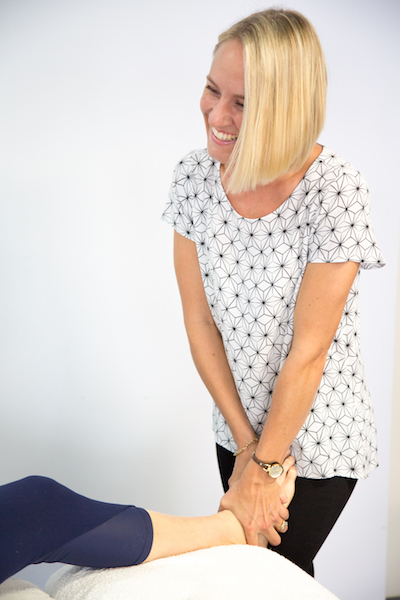An essential part of a healthy diet is enjoying a wide variety of fresh, flavoursome foods to keep our taste buds happy, help us stay on track and most importantly, provide our body with an array of important nutrients. For a sustainable approach to a healthy diet, focus on enjoying more of the right foods, rather than trying to limit the “wrong” foods. To provide some recipe inspiration and help us appreciate the nutritional value of tasty home cooking, we asked our physiotherapists here at Stafford Physio and Pilates to provide us with their recipe go-tos. Our consulting dietitian, Regina, has provided some commentary as to why the meal is a good choice.
Allyson: Salmon Soba with Ginger and Citrus Dressing
Click here for the recipe by Jamie Oliver from Jamie Magazine
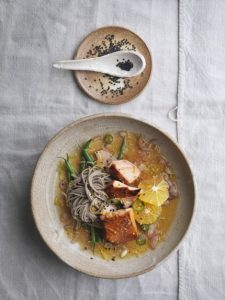 Regina says: Salmon, soba and citrus: a nutritious and flavoursome combination to add excitement to any weeknight dinner. Oily fish such as salmon are not only tasty and refreshing, but a powerhouse of important nutrients. Salmon is a fantastic source of omega-3, which is an essential fatty acid that the body can’t produce on its own. Omega 3 fatty acids have been shown to help regulate metabolism, reduce inflammation, lower blood pressure and cholesterol, and protect against heart disease. Salmon is also an excellent source of protein, making this dish a great post-workout choice – especially when paired with soba noodles. Soba noodles are made from buckwheat, which is a high quality protein based on amino acid composition and digestibility. Soba noodles are also packed with fibre to keep our digestive system healthy. Lastly, the addition of citrus fruit provides us with antioxidants for reducing cell damage, including the powerful antioxidant vitamin C that assists with the synthesis of collagen, connective tissues, bones and teeth. Overall, this nourishing combination provides one serve each of wholegrains and lean meat. To boost the vegetable content to two serves, dish up each portion with a side of 100g steamed green and/or orange vegetables per portion (fresh or frozen).
Regina says: Salmon, soba and citrus: a nutritious and flavoursome combination to add excitement to any weeknight dinner. Oily fish such as salmon are not only tasty and refreshing, but a powerhouse of important nutrients. Salmon is a fantastic source of omega-3, which is an essential fatty acid that the body can’t produce on its own. Omega 3 fatty acids have been shown to help regulate metabolism, reduce inflammation, lower blood pressure and cholesterol, and protect against heart disease. Salmon is also an excellent source of protein, making this dish a great post-workout choice – especially when paired with soba noodles. Soba noodles are made from buckwheat, which is a high quality protein based on amino acid composition and digestibility. Soba noodles are also packed with fibre to keep our digestive system healthy. Lastly, the addition of citrus fruit provides us with antioxidants for reducing cell damage, including the powerful antioxidant vitamin C that assists with the synthesis of collagen, connective tissues, bones and teeth. Overall, this nourishing combination provides one serve each of wholegrains and lean meat. To boost the vegetable content to two serves, dish up each portion with a side of 100g steamed green and/or orange vegetables per portion (fresh or frozen).
Lucy: Sticky Vietnamese Pork Meatballs with Rice Noodles and Pickled Veg
Click here for the recipe from Delicious Magazine
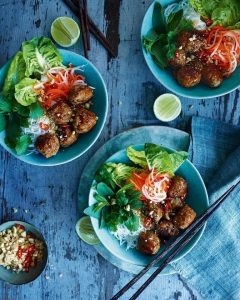 Regina says: When it comes to maintaining a healthy, balanced diet, it’s crucial to find ways to truly enjoy the foods we’re putting on our plate. This recipe is a taste explosion providing a great example of how we can combine fresh, whole foods to maximise flavour. Chilli, lemongrass and herbs are an excellent way to flavour food without contributing additional kilojoules or sodium. However, this recipe does contain a high amount of salt and high sodium sauces, making it an occasional treat to enjoy. But for those looking to reduce their sodium intake or those with high blood pressure, there’s a few easy replacements that can be made to enjoy similar Asian recipes. Try using salt reduced soy sauce, and diluting high sodium sauces with lime juice, pineapple juice or even water. Peanut oil, chilli oil and sesame oil are also delicious, low-salt alternatives that don’t sacrifice the desired taste. Once again, this recipe is protein packed due to the contribution of pork. Red meat is a complete protein source, meaning it contains all essential amino acids that help us build muscle amongst other functions. Red meat is also a fantastic contributor of many important nutrients including iron for carrying oxygen and making red blood cells, zinc for wound healing and cell growth, and B12 for DNA synthesis and energy production. Lastly, this recipe highlights a recent health trend of “pickled”veg. However, it’s important to keep in mind that pickling foods with vinegar such as this recipe does not have the same fermentation effects of pickling food in brine. Again, these pickled veg are a high sodium choice making this recipe a tasty treat to be enjoyed on occasion. For a low salt alternative, simply julienne or grate some fresh veg such as carrot, zucchini and cabbage. Follow these steps for this tasty, Vietnamese favourite:
Regina says: When it comes to maintaining a healthy, balanced diet, it’s crucial to find ways to truly enjoy the foods we’re putting on our plate. This recipe is a taste explosion providing a great example of how we can combine fresh, whole foods to maximise flavour. Chilli, lemongrass and herbs are an excellent way to flavour food without contributing additional kilojoules or sodium. However, this recipe does contain a high amount of salt and high sodium sauces, making it an occasional treat to enjoy. But for those looking to reduce their sodium intake or those with high blood pressure, there’s a few easy replacements that can be made to enjoy similar Asian recipes. Try using salt reduced soy sauce, and diluting high sodium sauces with lime juice, pineapple juice or even water. Peanut oil, chilli oil and sesame oil are also delicious, low-salt alternatives that don’t sacrifice the desired taste. Once again, this recipe is protein packed due to the contribution of pork. Red meat is a complete protein source, meaning it contains all essential amino acids that help us build muscle amongst other functions. Red meat is also a fantastic contributor of many important nutrients including iron for carrying oxygen and making red blood cells, zinc for wound healing and cell growth, and B12 for DNA synthesis and energy production. Lastly, this recipe highlights a recent health trend of “pickled”veg. However, it’s important to keep in mind that pickling foods with vinegar such as this recipe does not have the same fermentation effects of pickling food in brine. Again, these pickled veg are a high sodium choice making this recipe a tasty treat to be enjoyed on occasion. For a low salt alternative, simply julienne or grate some fresh veg such as carrot, zucchini and cabbage. Follow these steps for this tasty, Vietnamese favourite:
Fun fact: Ever wondered why our population is split into those who love coriander vs. those who can’t stand it? Based on genetics, some people have highly sensitive smell receptors resulting in the perception of coriander as a soap-like taste!
Sandra: Baked Salmon Fishcakes
See recipe below, this one is a family favourite from Sandra’s Mum!
Regina says: Passed down from Sandra’s mum, this seafood favourite is without a doubt worth adding to your repertoire. We’ve spoken about the sensational nutritional value of salmon, which might be made more appealing to the kids and non-seafood lovers when packaged into a tasty fishcake. The Heart Foundation recommends that we consume fish or seafood 2-3 times per week for a heart-healthy diet. As an added bonus, tinned salmon is a cheaper and longer lasting alternative to salmon fillets, making this a perfect dish to whip up as a last minute dinner or to meal prep tomorrow’s lunch. Next up, we have the benefit of carbohydrates from the bread crumbs and potatoes. Despite receiving a lot of negative attention, carbohydrates are a vital part of a healthy diet to assist with chronic disease prevention, weight control, and general wellbeing. As the preferred fuel source for our brains and muscles, carbohydrates should make up 45-65% of the total daily kilojoules we consume. Carbohydrates are not something to fear, containing the same amount of kilojoules per gram as protein. Carbohydrates not only provide us with energy, but assist with boosting exercise performance, maximizing post exercise recovery, and improving brain function, mood and concentration. Try swapping half of the white potato for sweet potato for the added benefit of vitamin A. Lastly, plating these fishcakes with a fresh salad or steamed vegetables will make a delicious light meal that boosts your daily vegetable servings. Try including vegetables of different colours, to incorporate a variety of different nutrients and antioxidants. Try a fresh salsa with diced tomatoes, cucumber, yellow capsicum, red onion, mint and pineapple. Did someone say delicious? This recipe definitely deserves a regular spot on your menu:
INGREDIENTS
4 brushed potatoes with skin
4 slices of whole grain bread
1 415g can of red salmon
1 free range egg, beaten
Natural yoghurt.
Coriander to garnish
METHOD
Preheat oven to 180 degrees C and line an oven tray with baking paper.
Boil potatoes for 20 minutes until cooked. Drain and mash with skins on.
Put bread in food processor or grate it. Add to the potatoes with the salmon.
Add in the egg and mix well.
Form the mixture into little cakes.
Roll in natural yoghurt and bake for 20 minutes.
Serve with coriander on top and with a green salad or steamed veges of your choice.
Megan: Jamie Oliver’s Veggie Enchiladas
Click here for the recipe by Jamie Oliver
 Regina says: Carbohydrates, protein, fibre, plenty of nutrients from hidden veg, and a mouth watering taste combination = dietitian approved! This recipe is a perfect example of a balanced meal that provides plenty of nourishment at a low kilojoule cost. As we discussed, the carbohydrates provided by the wraps and blackbeans are the preferred fuel source for our brain and muscles, and will help us last through a busy week of work and training. Secondly, this meal is another high protein option given the protein content of beans. Although plant based proteins are not naturally complete on their own (meaning that they are lacking in one or more essential amino acids), the combination of legumes and grains in this recipe provides what’s called complimentary proteins. In short, pairing the black beans with a wholegrain wrap provides an adequate amount of each essential amino acid, resulting in a complete amino acid profile that is desirable to support health. Together, they pack a protein punch that is highly bioavailable, making them a great occasional alternative to lean meat to reduce our saturated fat intake. Beans are also high in fibre, which functions to keep our digestive system healthy and can help prevent diet-related chronic diseases like diabetes and heart disease. Fibre has a low glycaemic index, meaning that it helps stabilise our blood sugar levels and keeps us fuller for longer to assist with weight control. Lastly, apart from providing us with melted, tasty goodness, reduced fat cheese is an important source of calcium. Calcium is important for the development and maintenance of bone, as well as proper cardiac and neuromuscular functioning. Adequate calcium and vitamin D paired with a pilates class involving weight bearing, resistance exercise is an excellent recipe for preventing osteoporosis and skeletal injury. If you’re interested in how this tasty Mexican favourite can be adapted into such a nourishing, healthy meal, here’s how you can give it a go (serves 4):
Regina says: Carbohydrates, protein, fibre, plenty of nutrients from hidden veg, and a mouth watering taste combination = dietitian approved! This recipe is a perfect example of a balanced meal that provides plenty of nourishment at a low kilojoule cost. As we discussed, the carbohydrates provided by the wraps and blackbeans are the preferred fuel source for our brain and muscles, and will help us last through a busy week of work and training. Secondly, this meal is another high protein option given the protein content of beans. Although plant based proteins are not naturally complete on their own (meaning that they are lacking in one or more essential amino acids), the combination of legumes and grains in this recipe provides what’s called complimentary proteins. In short, pairing the black beans with a wholegrain wrap provides an adequate amount of each essential amino acid, resulting in a complete amino acid profile that is desirable to support health. Together, they pack a protein punch that is highly bioavailable, making them a great occasional alternative to lean meat to reduce our saturated fat intake. Beans are also high in fibre, which functions to keep our digestive system healthy and can help prevent diet-related chronic diseases like diabetes and heart disease. Fibre has a low glycaemic index, meaning that it helps stabilise our blood sugar levels and keeps us fuller for longer to assist with weight control. Lastly, apart from providing us with melted, tasty goodness, reduced fat cheese is an important source of calcium. Calcium is important for the development and maintenance of bone, as well as proper cardiac and neuromuscular functioning. Adequate calcium and vitamin D paired with a pilates class involving weight bearing, resistance exercise is an excellent recipe for preventing osteoporosis and skeletal injury. If you’re interested in how this tasty Mexican favourite can be adapted into such a nourishing, healthy meal, here’s how you can give it a go (serves 4):
We hope this has given you some inspiration for some delicious new meals to introduce to your repertoire in 2019!
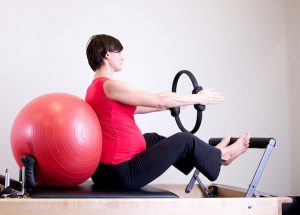



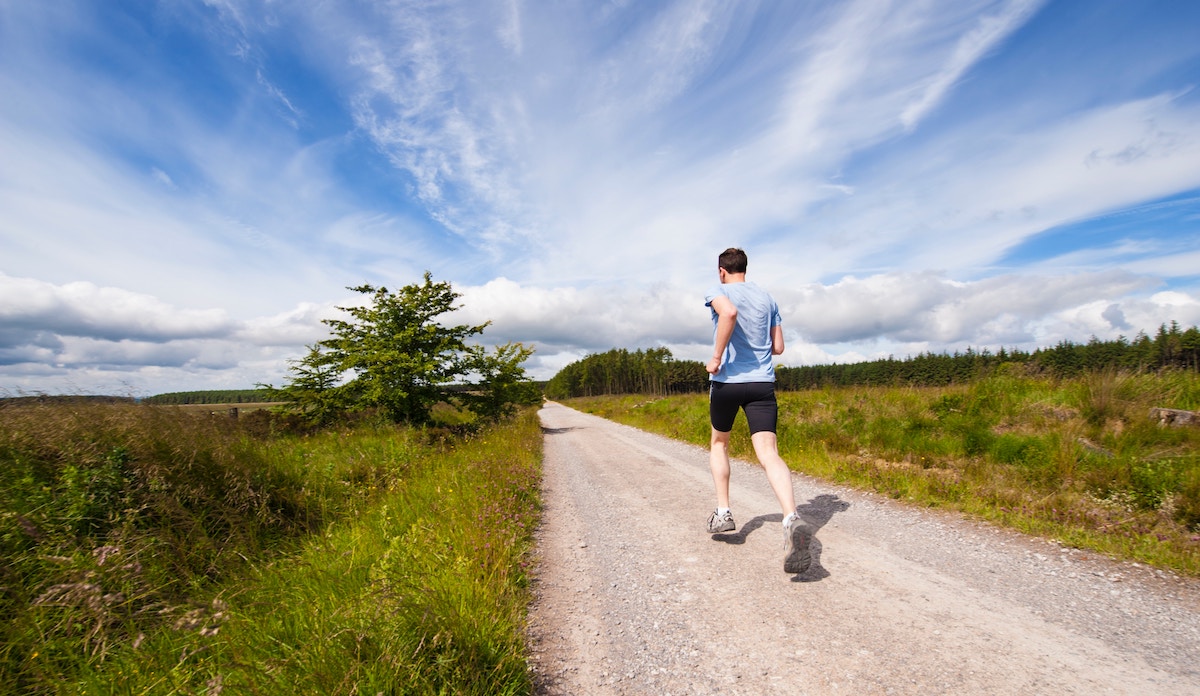
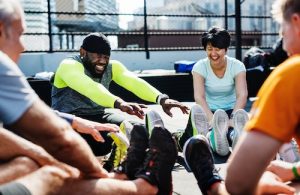
 6. Include strength and core stability training
6. Include strength and core stability training 7. Get enough sleep
7. Get enough sleep
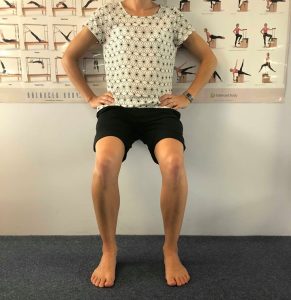 Treatment of Runner’s Knee can involve:
Treatment of Runner’s Knee can involve: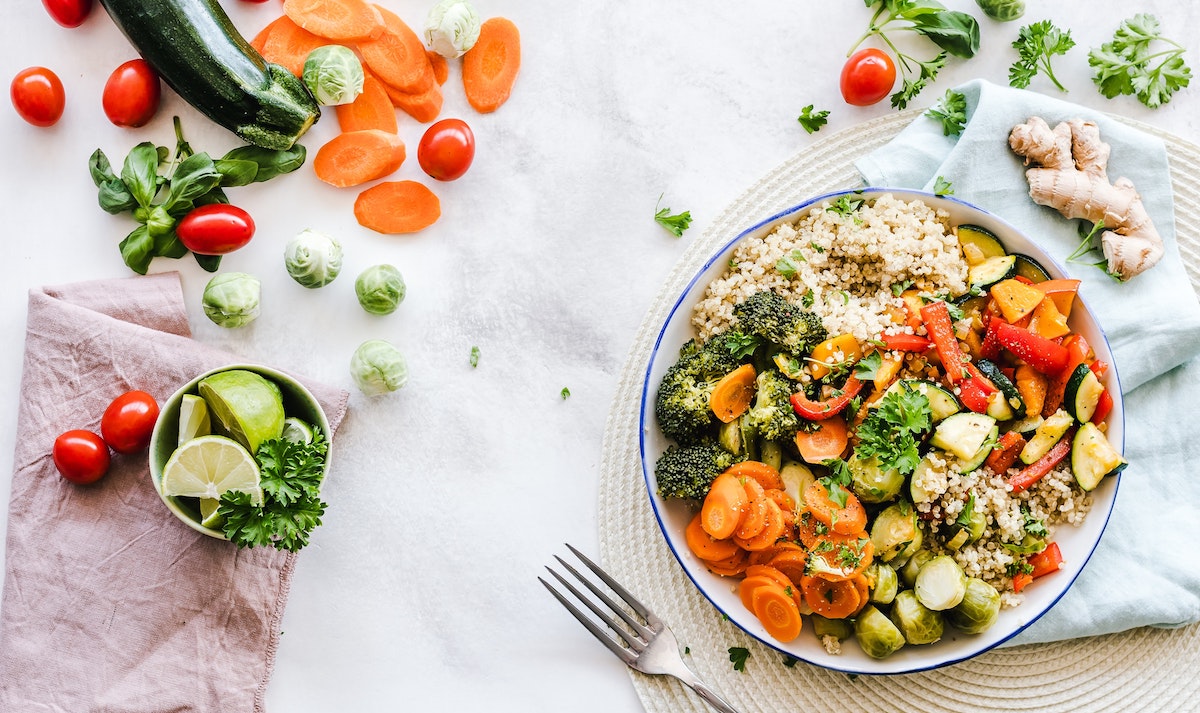
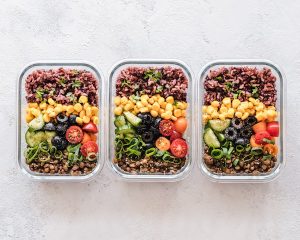 Try following this portion guide that illustrates the types and quantities of foods that we should be aiming to incorporate in every main meal (lunch and dinner):
Try following this portion guide that illustrates the types and quantities of foods that we should be aiming to incorporate in every main meal (lunch and dinner):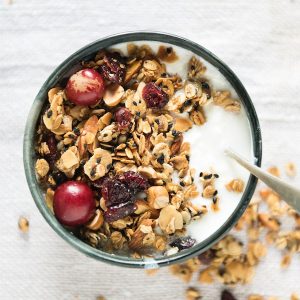 Breads and cereals:
Breads and cereals: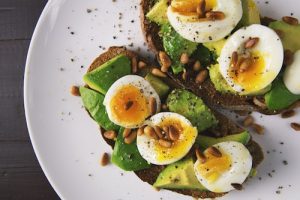 A boiled egg Great with: sliced avocado, a spread of hommus, cracker pepper or chilli flakes, sliced tomato and cheese on a multigrain cracker
A boiled egg Great with: sliced avocado, a spread of hommus, cracker pepper or chilli flakes, sliced tomato and cheese on a multigrain cracker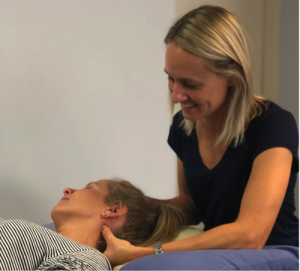 If you suffer from headaches or migraines, you’re certainly not alone. It is estimated that 1 in 20 people do! In many cases, the pain in the head actually stems from issues with the upper spine and neck. This is why around 80% of people are able to get headache relief through physiotherapy treatment.
If you suffer from headaches or migraines, you’re certainly not alone. It is estimated that 1 in 20 people do! In many cases, the pain in the head actually stems from issues with the upper spine and neck. This is why around 80% of people are able to get headache relief through physiotherapy treatment.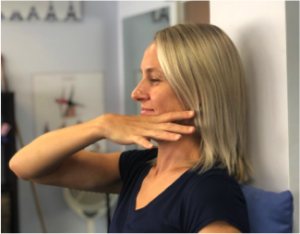 We can help prescribe some appropriate at-home exercises to help. This simple exercise that can help relieve a headache.
We can help prescribe some appropriate at-home exercises to help. This simple exercise that can help relieve a headache. Symptoms that you have a DVT may include:
Symptoms that you have a DVT may include: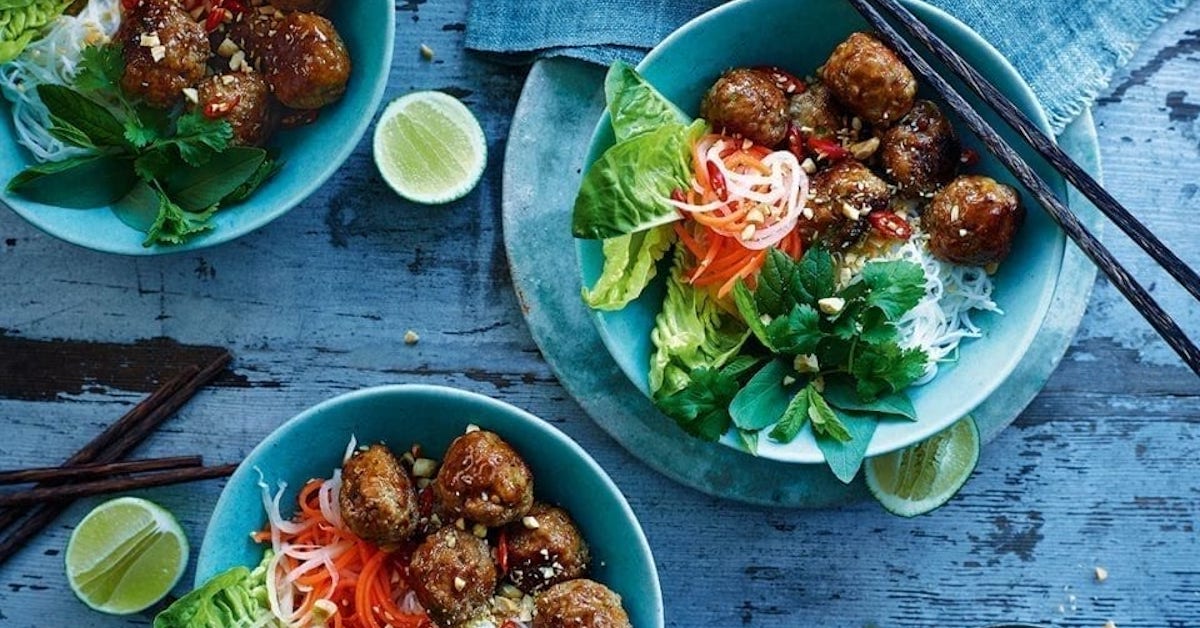
 Regina says: Salmon, soba and citrus: a nutritious and flavoursome combination to add excitement to any weeknight dinner. Oily fish such as salmon are not only tasty and refreshing, but a powerhouse of important nutrients. Salmon is a fantastic source of omega-3, which is an essential fatty acid that the body can’t produce on its own. Omega 3 fatty acids have been shown to help regulate metabolism, reduce inflammation, lower blood pressure and cholesterol, and protect against heart disease. Salmon is also an excellent source of protein, making this dish a great post-workout choice – especially when paired with soba noodles. Soba noodles are made from buckwheat, which is a high quality protein based on amino acid composition and digestibility. Soba noodles are also packed with fibre to keep our digestive system healthy. Lastly, the addition of citrus fruit provides us with antioxidants for reducing cell damage, including the powerful antioxidant vitamin C that assists with the synthesis of collagen, connective tissues, bones and teeth. Overall, this nourishing combination provides one serve each of wholegrains and lean meat. To boost the vegetable content to two serves, dish up each portion with a side of 100g steamed green and/or orange vegetables per portion (fresh or frozen).
Regina says: Salmon, soba and citrus: a nutritious and flavoursome combination to add excitement to any weeknight dinner. Oily fish such as salmon are not only tasty and refreshing, but a powerhouse of important nutrients. Salmon is a fantastic source of omega-3, which is an essential fatty acid that the body can’t produce on its own. Omega 3 fatty acids have been shown to help regulate metabolism, reduce inflammation, lower blood pressure and cholesterol, and protect against heart disease. Salmon is also an excellent source of protein, making this dish a great post-workout choice – especially when paired with soba noodles. Soba noodles are made from buckwheat, which is a high quality protein based on amino acid composition and digestibility. Soba noodles are also packed with fibre to keep our digestive system healthy. Lastly, the addition of citrus fruit provides us with antioxidants for reducing cell damage, including the powerful antioxidant vitamin C that assists with the synthesis of collagen, connective tissues, bones and teeth. Overall, this nourishing combination provides one serve each of wholegrains and lean meat. To boost the vegetable content to two serves, dish up each portion with a side of 100g steamed green and/or orange vegetables per portion (fresh or frozen). Regina says: When it comes to maintaining a healthy, balanced diet, it’s crucial to find ways to truly enjoy the foods we’re putting on our plate. This recipe is a taste explosion providing a great example of how we can combine fresh, whole foods to maximise flavour. Chilli, lemongrass and herbs are an excellent way to flavour food without contributing additional kilojoules or sodium. However, this recipe does contain a high amount of salt and high sodium sauces, making it an occasional treat to enjoy. But for those looking to reduce their sodium intake or those with high blood pressure, there’s a few easy replacements that can be made to enjoy similar Asian recipes. Try using salt reduced soy sauce, and diluting high sodium sauces with lime juice, pineapple juice or even water. Peanut oil, chilli oil and sesame oil are also delicious, low-salt alternatives that don’t sacrifice the desired taste. Once again, this recipe is protein packed due to the contribution of pork. Red meat is a complete protein source, meaning it contains all essential amino acids that help us build muscle amongst other functions. Red meat is also a fantastic contributor of many important nutrients including iron for carrying oxygen and making red blood cells, zinc for wound healing and cell growth, and B12 for DNA synthesis and energy production. Lastly, this recipe highlights a recent health trend of “pickled”veg. However, it’s important to keep in mind that pickling foods with vinegar such as this recipe does not have the same fermentation effects of pickling food in brine. Again, these pickled veg are a high sodium choice making this recipe a tasty treat to be enjoyed on occasion. For a low salt alternative, simply julienne or grate some fresh veg such as carrot, zucchini and cabbage. Follow these steps for this tasty, Vietnamese favourite:
Regina says: When it comes to maintaining a healthy, balanced diet, it’s crucial to find ways to truly enjoy the foods we’re putting on our plate. This recipe is a taste explosion providing a great example of how we can combine fresh, whole foods to maximise flavour. Chilli, lemongrass and herbs are an excellent way to flavour food without contributing additional kilojoules or sodium. However, this recipe does contain a high amount of salt and high sodium sauces, making it an occasional treat to enjoy. But for those looking to reduce their sodium intake or those with high blood pressure, there’s a few easy replacements that can be made to enjoy similar Asian recipes. Try using salt reduced soy sauce, and diluting high sodium sauces with lime juice, pineapple juice or even water. Peanut oil, chilli oil and sesame oil are also delicious, low-salt alternatives that don’t sacrifice the desired taste. Once again, this recipe is protein packed due to the contribution of pork. Red meat is a complete protein source, meaning it contains all essential amino acids that help us build muscle amongst other functions. Red meat is also a fantastic contributor of many important nutrients including iron for carrying oxygen and making red blood cells, zinc for wound healing and cell growth, and B12 for DNA synthesis and energy production. Lastly, this recipe highlights a recent health trend of “pickled”veg. However, it’s important to keep in mind that pickling foods with vinegar such as this recipe does not have the same fermentation effects of pickling food in brine. Again, these pickled veg are a high sodium choice making this recipe a tasty treat to be enjoyed on occasion. For a low salt alternative, simply julienne or grate some fresh veg such as carrot, zucchini and cabbage. Follow these steps for this tasty, Vietnamese favourite: Regina says: Carbohydrates, protein, fibre, plenty of nutrients from hidden veg, and a mouth watering taste combination = dietitian approved! This recipe is a perfect example of a balanced meal that provides plenty of nourishment at a low kilojoule cost. As we discussed, the carbohydrates provided by the wraps and blackbeans are the preferred fuel source for our brain and muscles, and will help us last through a busy week of work and training. Secondly, this meal is another high protein option given the protein content of beans. Although plant based proteins are not naturally complete on their own (meaning that they are lacking in one or more essential amino acids), the combination of legumes and grains in this recipe provides what’s called complimentary proteins. In short, pairing the black beans with a wholegrain wrap provides an adequate amount of each essential amino acid, resulting in a complete amino acid profile that is desirable to support health. Together, they pack a protein punch that is highly bioavailable, making them a great occasional alternative to lean meat to reduce our saturated fat intake. Beans are also high in fibre, which functions to keep our digestive system healthy and can help prevent diet-related chronic diseases like diabetes and heart disease. Fibre has a low glycaemic index, meaning that it helps stabilise our blood sugar levels and keeps us fuller for longer to assist with weight control. Lastly, apart from providing us with melted, tasty goodness, reduced fat cheese is an important source of calcium. Calcium is important for the development and maintenance of bone, as well as proper cardiac and neuromuscular functioning. Adequate calcium and vitamin D paired with a pilates class involving weight bearing, resistance exercise is an excellent recipe for preventing osteoporosis and skeletal injury. If you’re interested in how this tasty Mexican favourite can be adapted into such a nourishing, healthy meal, here’s how you can give it a go (serves 4):
Regina says: Carbohydrates, protein, fibre, plenty of nutrients from hidden veg, and a mouth watering taste combination = dietitian approved! This recipe is a perfect example of a balanced meal that provides plenty of nourishment at a low kilojoule cost. As we discussed, the carbohydrates provided by the wraps and blackbeans are the preferred fuel source for our brain and muscles, and will help us last through a busy week of work and training. Secondly, this meal is another high protein option given the protein content of beans. Although plant based proteins are not naturally complete on their own (meaning that they are lacking in one or more essential amino acids), the combination of legumes and grains in this recipe provides what’s called complimentary proteins. In short, pairing the black beans with a wholegrain wrap provides an adequate amount of each essential amino acid, resulting in a complete amino acid profile that is desirable to support health. Together, they pack a protein punch that is highly bioavailable, making them a great occasional alternative to lean meat to reduce our saturated fat intake. Beans are also high in fibre, which functions to keep our digestive system healthy and can help prevent diet-related chronic diseases like diabetes and heart disease. Fibre has a low glycaemic index, meaning that it helps stabilise our blood sugar levels and keeps us fuller for longer to assist with weight control. Lastly, apart from providing us with melted, tasty goodness, reduced fat cheese is an important source of calcium. Calcium is important for the development and maintenance of bone, as well as proper cardiac and neuromuscular functioning. Adequate calcium and vitamin D paired with a pilates class involving weight bearing, resistance exercise is an excellent recipe for preventing osteoporosis and skeletal injury. If you’re interested in how this tasty Mexican favourite can be adapted into such a nourishing, healthy meal, here’s how you can give it a go (serves 4):
 Enjoying a wide variety of healthy foods is useful strategy for maintaining healthy habits in the long term, especially for those who become bored of repetition. Incorporating a variety of foods within each food group, especially fruits and vegetables of all colours, will also help us achieve our recommended intakes of important nutrients, antioxidants and fibre. Exploring the supermarket for new foods or undertaking a weekly “mystery ingredient” challenge are great ideas to start with. Be sure to look for mostly unprocessed foods, and check the nutrition label to limit excessive sugar, fat and salt. For some unique dinner inspiration, try searching for a recipe that incorporates:
Enjoying a wide variety of healthy foods is useful strategy for maintaining healthy habits in the long term, especially for those who become bored of repetition. Incorporating a variety of foods within each food group, especially fruits and vegetables of all colours, will also help us achieve our recommended intakes of important nutrients, antioxidants and fibre. Exploring the supermarket for new foods or undertaking a weekly “mystery ingredient” challenge are great ideas to start with. Be sure to look for mostly unprocessed foods, and check the nutrition label to limit excessive sugar, fat and salt. For some unique dinner inspiration, try searching for a recipe that incorporates: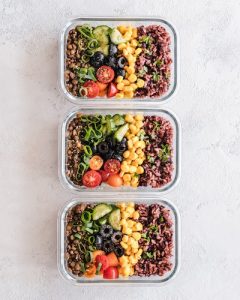 Taking the time to plan for potential barriers to healthy eating can help us maintain our New Years goals when the going gets tough. After identifying what personal barriers may interfere with your positive food choices, allocate some strategies that may help you overcome these. For example:
Taking the time to plan for potential barriers to healthy eating can help us maintain our New Years goals when the going gets tough. After identifying what personal barriers may interfere with your positive food choices, allocate some strategies that may help you overcome these. For example:
